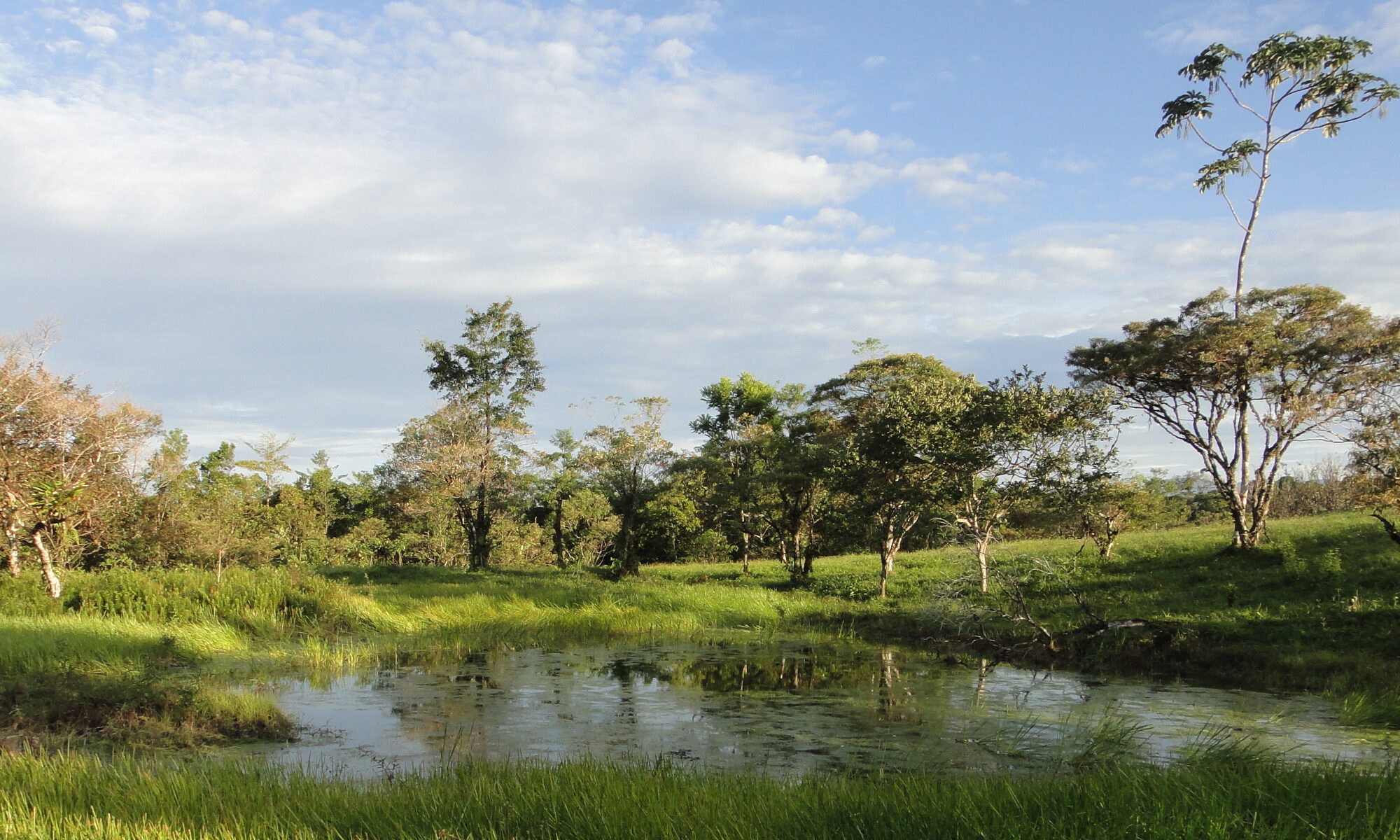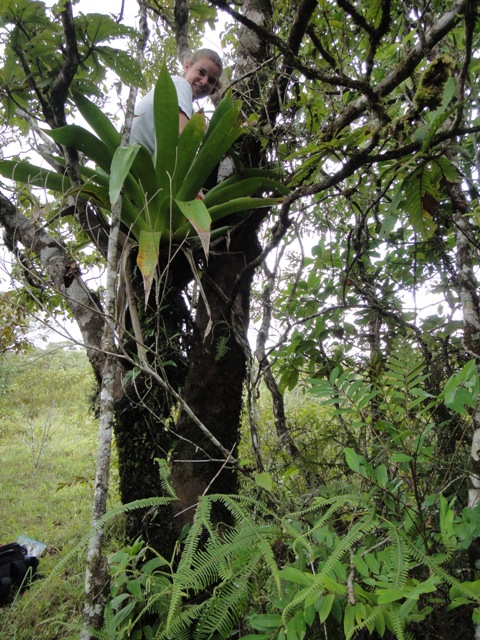THE RAIN IS HERE!!
Just a quick note to say that it is now actually the rainy season! We’ve had a couple of good nights of rain and the bromeliads are less bone-dry! Woo! Unfortunately that now means working in the rain some of the time but it’s worth it to actually have the critters live!
Speaking of critters – we’re gearing up to put our experimental communities together in the next couple of days. Today was a final push to find the damselfly larvae we need and we found 36 in one day! Woo!
And as a final note – I found the cutest snake you will ever see in a bromeliad today. A little Imantodes sp. (blunt headed snake) that was about 20 cm long and curled up on my hand. His name is leonard. Pictures to follow.
Pura Vida!
Who stopped the rain??
Here it is, a week into our field season in the rainy season in Costa Rica… and we’re in the middle of a drought! While it was nice for a few days to have sun and beautiful weather for working, it is becoming concerning. Even the rangers at the field station say they have never seen an October like this! All of our bromeliads are drying out which makes finding our aquatic insect larvae challenging, and we are having to actually go and water them to hopefully maintain some kind of community.
Hey, maybe if I can incorporate “climate change” into the title of my paper I can publish in Nature! 😛
Does anyone else feel that field biology is just an excuse for scientists to do arts and crafts?
Seriously – what are the main pieces of equipment you use in the field. I bet it involves hot glue, duct tape, and ziploc bags!
Words from the Wise
Being a grad student is hard work. It seems to me that the greatest challenge isn’t always the science, but maintaining motivation and direction despite working more or less independently for a long time. These days there’s a cottage industry of writers who are out to motivate and inspire you — some with a particular focus on academics. Still, I don’t think I’ve ever encountered a book which contains as high a concentration of quality advice as these (short, free, online) lists:
Some Modest Advice for Graduate Students is something I hope most graduate students in any discipline read. Our zoology grad students included a link to it in the orientation information for new students!
The Art of Mediocrity by Paul Keddy has been on a wall near my desk for a long time. And I still find lots of good reminders in this punchy 12-item list. My favourite right now is #4) Avoid familiarity with other living creatures.

